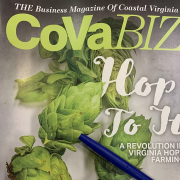The S-Curve

I was recently afforded the opportunity to hear Kyle Johnson, the minister of Next Level Church, speak at the recent Annual Member Meeting of NACDB (National Association of Church Design Build) in Arlington, Texas. He gave the keynote address based on the “S-Curve” thought process regarding growth. It was interesting to hear him compare business and church growth. Something you might not normally expect. I took the following notes and added my own thoughts and embellishments as they apply to our own experiences.
It’s funny how things often tie together. Kyle was about to share his message which often referenced the rollercoaster or S-Curve theory. As I was walking over from the hotel to the convention center where the event was to take place, I noticed a wonderful orange sunrise coming up in the distance. It was striking. But what caught my attention especially was the shadowy figure of the rollercoaster from Six Flags in the foreground. A few hours later Kyle would be sharing his thoughts about rollercoasters and sunrises……hummmmm makes you think.
Growth is linear…up and to the right. Well that’s what we would like to consider consistent growth. Consistent and sustainable growth. But we know that is in theory only and does not necessarily occur in practice. Growth doesn’t happen in our businesses in a linear fashion. Nor does growth for churches happen linearly either. It’s more up and down like a rollercoaster. A continuous cycle that has its ebbs and tides and hopefully moves generally upward as the cycle repeats.

There are several recognizable phases that are evident in this S-Curve process:
1. Launch
The launching is the first phase and can easily be demonstrated by the kick off of a new business. However, other areas can be illustrated by this such as expansion, an acquisition or even a new service. Something different. Anything new can be considered a launch phase. On a rollercoaster, it is when you sit in that seat and pull down the bar that holds you in… and you suck your gut in just a little bit more so you can tug on it just a little bit more and the bar clicks tighter one more notch. Then you hear the air breaks go off on a rollercoaster. Hear we go! Hang on!
2. Acceleration
Seth Godin described the next phase of any business cycle as the acceleration phase. That moment when your movement just begins. It’s slow as first but you are proceeding forward. Gaining a bit of momentum possibly. It’s that first dip on the rollercoaster as it leaves the loading area and heads out on the track. A short downward portion that we all experience in our stomachs possibly, both on the rollercoaster and in the business world.
3. Rapid Growth
The third phase is all about growth. Business is fun at this point. Work is coming in. So is money. This is what was planned, right? Up and to the right, just as all business models are represented. Growth is rapid. You get more projects than you know how to handle. You have to hire more people to perform the work. Things are good, maybe even a bit frantic. But that’s okay. You are making money. Making progress. Accomplishing a lot. This is good. A little sweat is good… right? Sure it is. Put your hands up on the rollercoaster! You feel like you could do this all day.
4. Diminishing Returns
Oh no, here it comes. You couldn’t really expect it to continue up and right forever, could you? Progress slows, but that’s OK because you were swamped and now you appreciate the breather. It should be nothing. It might last a month, maybe a few before you recognize the slowed forward momentum. Maybe you looked at your financials and see that you increased in revenue in every previous month. Over and over. But not this month. It was still a good number. Maybe even a little dip from last month. Nothing to worry about… or is there? It’s that moment on the rollercoaster when the first car goes over the top of the hill. The question for business owners is are you in the front seat or the back? Can you see what is ahead or are you blinded by an obstructed view?
5. Free Fall
Here comes the sickening feeling in your stomach. We lose a project. And then another. We never lost projects before. What do you mean our prices are too high?After all these years of our relationship and the past work we have performed for you? The other guys? It’s a downward spin on the rollercoaster. You can feel the wheels coming off the tracks just a little bit. Stomach floating upward into your throat. Not enough work for those new people you just hired.
Here is the moment when we have to begin to make a difference in our company. Being a good leader isn’t just about doing good when things are well. That’s easy to manage. A good leader recognizes the issues and takes action. I’ve often heard that it isn’t the challenges that makes you who you are, but how you react to those challenges.

You are going to have to avoid the Doom Loop. You keep doing the same… over and over. Where is that ultimately going to get you? Probably in the same spot you began… without progress. You tried something new and it didn’t take off immediately. You got scared and freaked out! The free fall makes you want to stop what you are doing and go back to something safe. The growth isn’t there anymore and it isn’t happening the way you hoped or planned. Trust the systems, structures, communication and processes. It’s there… give it time.

However, if there aren’t any changes made, your are bound to endure the Doom Loop. A good leader will make the necessary changes. Sticking your head in the sand and expecting it to get better isn’t a solution. If you are not willing to make the changes necessary to get back to the top of the S-Curve then you will certainly suffer. And so will the rest of your team.
So guess what? Every organization will experience some part of the Doom Loop. The real question is for what duration will you remain on this reoccurring cycle? How long will it take you as a leader to react? Good visionary leaders can see across the rollercoaster and see what the future holds. You must be willing to make the changes necessary. Jim Collins describes this trait as a good leader becoming a great leader.
Sunsets: Close your eyes and picture a sunset in your mind. Where are you? What is the perfect sunset that you envision? If this was asked in a room full of people, everyone would have a different answer, right? Is only one person envisioning the correct sunset? No they are all correct but they may not be envisioning your sunset as the leader. Your sunset is the vision of the company. The direction you are going. The master plan or maybe the 3 year vivid vision such as Cameron Herold suggests and our office does. So have you shared your vision with the others on your team so they know what your sunset looks like?
Where are you on the rollercoaster? And can you truly evaluate your current status? The bigger question is what are you going to do about it? How will your react to this challenge?
www.ionicdezigns.com









